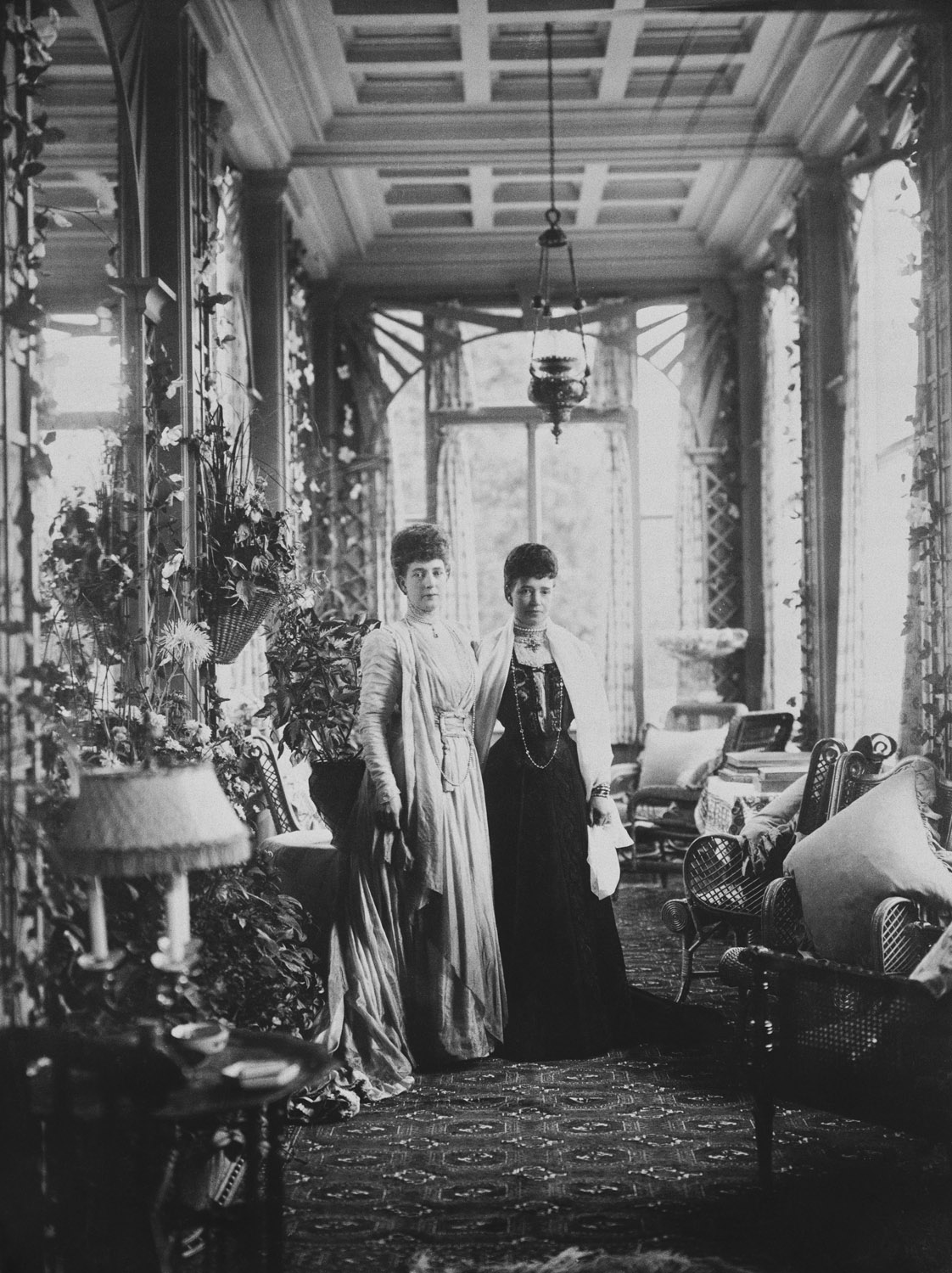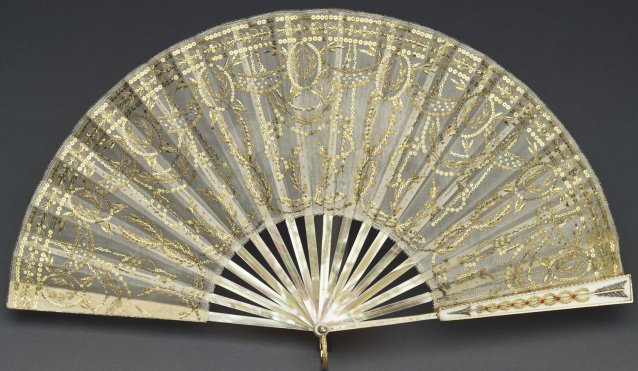In 1904, the Dowager Empress Marie Feodorovna of Russia purchased as a gift for her sister, Queen Alexandra, a fan composed of two-color gold, guilloché enamel, mother-of-pearl, blond tortoiseshell, gold sequins, silk, cabochon rubies, and rose diamonds from the House of Fabergé in Saint Petersburg. The Empress paid 325 rubles for it. At the published rates of exchange for January 1904, this was almost exactly the same as £13 7s (The Times, February 17, 1904, p. 13) or $64.25 (New York Times, January 3, 1904, p. 7).
The cost of living luxuriously
by Angus Trumble, 9 July 2018
Today there are various online tools designed to calculate the equivalent of these prices in 2018, and all are based on formulas of varying degrees of complexity according to which essentially two sets of data—(a) prices (consumer goods, commodities, rent, stocks, bonds, gold, etc.) and (b) earnings (salaries, wages, fees, charges, interest rates, dividends, etc.) are assembled and then indexed or adjusted in the light of annual inflation or depreciation, cyclical change, and a host of economic variables that alter the value of money over time.
Of these tools, and there are many, perhaps the most finely calibrated and reliable is the U.S. Department of Labor’s so-called Consumer Price Index, which is now more than 100 years old. Between January 1913 and January 2012 this rose from 9.8 to 226.665, an aggregate increase of 2,212.9%. Upon that basis alone—and not taking into account any number of other factors that are uniquely applicable to the sumptuous art of the eventailliste or specialist fan-maker, or indeed the House of Fabergé, such as the economy of pre- and post-revolutionary Russia, the fluctuating exchange rate of the ruble to the pound sterling, the scarcity of specialist skills of enriching and decoration, the availability of tortoise-shell, fine lace-making, etc.—today’s price for the fan ought to be in the vicinity of £295 or $1,422.
And this is where we strike our principal problem, because it does not take an economic historian to grasp that in the context of today’s luxury goods business, in which a pair of Christian Louboutin high-heeled shoes now retails at Barney’s in New York for $795, the price tag of £295 for the fan is peanuts. One can account for this anomaly in various ways, but a keener elucidation of the original £13 7s will always take us back to plotting its equivalents in other 1904 wages and salaries on the one hand and/or costs and prices on the other.
Accordingly, the sum of £13 7s was roughly 2.78% of the yearly earnings of a London barrister; 3.37% of a Harley Street physician’s; 6.47% of a Church of England clergyman’s; 7.84% of a middle-ranking army officer’s; a clerk in the civil service: 11.49%; a carpenter: 11.9%; a lady typist in the civil service: 16.87%; an unskilled male labourer: 24.45%; a seasonal agricultural worker: 27.77%, and a poor married woman who took in sewing as and when she could: 51.34%. These hard numbers are derived from the testimony of real people, and are set out in John Burnett’s fascinating A History of the Cost of Living in England from the Middle Ages to the 1960s (Harmondsworth: Penguin, 1969, pp. 268–278, 298–301).
Let us look a little more closely at the example of the London barrister. If we assume that a reasonably all-right London barrister now earns approximately £200,000 per annum (in many cases this is demonstrably conservative), it will be found that the CPI-adjusted price of £295 for the fan is only 0.1475% of his or her yearly earnings. On the other hand, if, as in 1904, Queen Alexandra’s fan today cost the equivalent of 2.78% of our barrister’s annual income, the price would be a great deal higher, approximately £5,560—so we are obliged to tear up the CPI. Incidentally, I would argue that this steeper sum is much nearer the mark because of the enormous increase in the price of gold and precious stones, and of the steady rise in the cost and scarcity of highly skilled artisanal labour—which we can assume is probably beyond the remit of the CPI. Thus, the fan might easily now cost £20,000 or more. In any case, tortoiseshell is critically endangered—let alone blond tortoiseshell: almost inconceivably rare—and is now permanently removed from the luxury goods menu, so the case is entirely academic. Indeed, what was once a useful personal accessory has by historical sleight of hand turned into an exquisite work of art, and migrated thence into a completely different market with its own completely different and rather more volatile criteria of value, but that is another story.
Returning to the solid 1904 fan benchmark of 325 rubles and £13 7s, let us assemble a few more comparisons. That sum was in 1904 the same as 44 weeks’ rent for a three-room flat in an East London tenement; one sixteenth of the price of a brand new Humberette motor car; roughly a quarter of the price of a good-quality saddle, or a third of that of a gig or jinker harness; the cost of 76 bottles of whisky or 200 lbs. of loose tea or 229 lbs. of Danish butter or 427 lbs. of British (and not colonial) beef; a fraction less than two years’ supply of coal and firewood for a working-class family; 178 two-ounce flasks of mastic varnish; 97 yards of best quality, 27 inch-wide artists’ Spanish linen canvas; three evenings’ entertainment in the best private box at the Hippodrome; two-thirds of the cost of an exotic hothouse shower bouquet from one of the better Mayfair Court florists; 1,780 copies of The Times newspaper (one a day for four years and nine months); about a quarter of the price of a first class ticket from Southampton to Melbourne via the Cape of Good Hope and Natal aboard a Blue Anchor Line steamer; 0.13% of the value of the estate of Alfred Wiggs, an industrious London builder, which was granted probate on January 12, 1904.
Even if you could locate and defend an equivalent of any one of these comparisons today (which is doubtful), you would assemble a wide range of theoretical prices for Queen Alexandra’s fan that differ sharply from the CPI adjusted figure of £295, in other words a spectrum so wide as to be entirely useless.
Note also that by their particularity these comparisons form a picture that is unique to 1904, and are bound to shuffle out of alignment in any other year. The quest for relative historical value is, in this sense, fruitless—tools or no tools. However, the exercise can be suggestive. Perhaps the most revealing point of comparison is the prices of food. Today at Waitrose online, for example, 76 bottles of Johnny Walker black label whisky cost £2,155; 200 lbs. of loose Twinings English breakfast tea £1,420; 229 lbs. of Danish butter £366.40, and 427 lbs. of British beef a staggering £11,951, although that is for rump steak at a high-end premium, so a more accurate figure ought to be considerably less than that, say £5,000 wholesale, or for lesser cuts.
Therefore, the best that we can say is that over the past 100 years the London fan to butter index has evolved in a relatively orderly manner, but that the fan to tea, fan to whisky, and, above all, the fan to beef indices have gone berserk. All have outstripped the CPI by some considerable margin, which no doubt says something about the evolving cost of the most expensive food in the developed economies, but rather less about high-end fans. Such are the pleasures and frustrations experienced by the economic historian straying into the world of art, but more properly by the art historian or museum curator seeking in vain the aid of economic history in his quest for relative values.
Last year, a painting by the late Jean-Michel Basquiat from 1982, Untitled, sold at auction in New York for a staggering $US 110.5 million. This sum would be—is—ridiculous but for the fact that someone not only paid it but could easily afford to do so. I suspect 100 years from now western society will be judged harshly in the glaring light of this single transaction, and a host of comparisons like the ones I have mentioned with respect to Queen Alexandra’s fan. Inter alia, the long-term critical fate of Jean-Michel Basquiat is also bound to suffer as a direct consequence. In other words, today’s crazy international art market will almost certainly guarantee that the artist is eventually brought down to a level of forlornness equivalent to that of a twentieth-century Edwin Long or else consign him to the relative obscurity of an eighteenth-century Poussin. However, I may be quite wrong about that. As George Eliot once remarked, among all forms of mistake prophecy is the most gratuitous.
Related information



The Gallery
Visit us, learn with us, support us or work with us! Here’s a range of information about planning your visit, our history and more!



Support your Portrait Gallery
We depend on your support to keep creating our programs, exhibitions, publications and building the amazing portrait collection!



Plan your visit
Information on location, accessibility and amenities.









